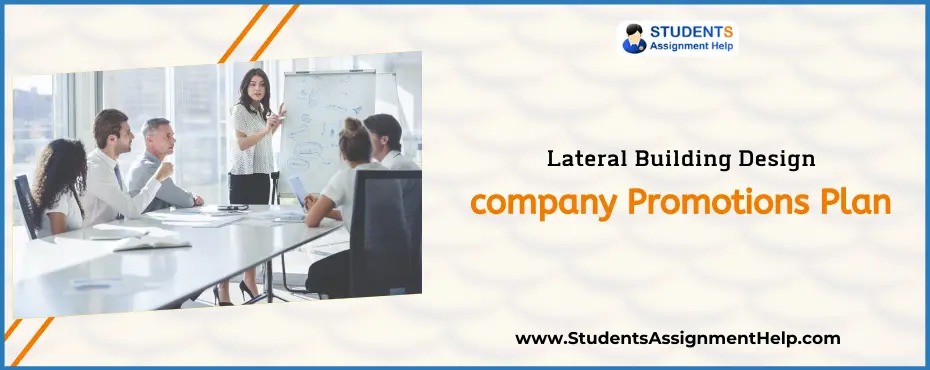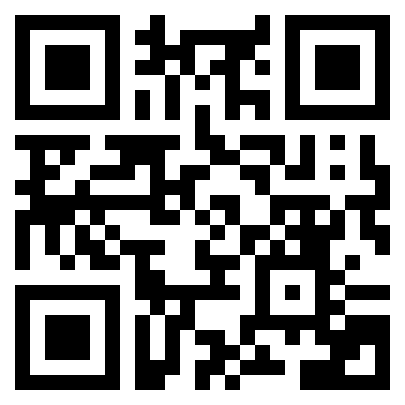Lateral Building Design company Promotions Plan

Assignment Help Question: 1. Assignment Two – “Promotions Plan”
DETAILED DESCRIPTION OF ASSIGNMENT
Your task in this assessment is to develop a promotions plan for a ‘client’. A ‘guest client’ will address the class in week 4 during the lecture. You may develop the promotions plan for this guest client’ or an organization of your choice. If you choose another organization you will need to seek both that organization’s permission and the permission of the unit coordinator. The plan should be professional – as if it were written by a professional marketer. The structure of the promotions plan should be loosely based around the plan outlined by Fill (2013).
Most importantly, the cost of implementing the plan should consider the most appropriate use of promotion mix tools (e.g. PR, sales promotions, advertising, etc.) given the resources and target market of the organization.
This assessment accounts for the following proportion of marks for this unit 40% The word limit for this assessment is No Word Limit.
Buy high-quality essays & assignment writing as per particular university, high school or college by UK, USA & Australian Writers
LEARNING OUTCOMES BEING ASSESSED
1. Devise effective marketing strategies and programs.
2. Formulate appropriate marketing communication strategies for practical business objectives.
3. Distinguish and justify different creative and media execution.
Assignment Help Answer: Promotional Plan
Introduction
All organizations need to communicate with a variety of stakeholders so that the former can get materials and services for undertaking business activities or collaborating and coordinating with others for securing suitable distribution of products and services and so on. Additionally, a business has to attract and retain consumers as the latter are free to choose among many hundreds and thousands of products and services that various other business organizations offer to them. Therefore, an appropriate mix of communication tools and the choice of media are essential for the promotion of products and services aimed at both business-to-consumer and business-to-business relationships. Marketing communication is a crucial platform for a business as it provides a core activity that all interested parties can understand for appreciating the value of products and services offered (Altstiel and Jean 2006).
Lateral Building Design is a company involved in providing building design and drafting services for town planning and building permit applications for a range of projects in the residential, commercial, and industrial sectors (Welcome 2014). An appropriate promotional plan can help the company to get more attention and awareness from its target customers. The essay presents a promotional plan for Lateral Building Design to reach its customers in a more effective manner. It includes context analysis, promotional objectives, strategies, implementation, and evaluation and control.

Context Analysis:
Customer, business, internal and external contexts are needed to be taken into consideration. In regard to customers, Lateral Building Design serves customers from a variety of sectors including residential, commercial, and industrial sectors (Welcome 2014). The level of competition is high and competitors, such as Building Services Consulting, SLR consulting services Australia, Lucid Consulting, etc. The reputation of the company affects the service, and thus Lateral Building Design has to focus on building reputation and awareness of its offered professional services (Building and Construction Industry 2014). The corporate strategy of the company is to give comprehensive quality service to its customers strictly adhering to the project brief and budget provided by the client. Consumers or the customers of the company are those who specifically demand building design and architectural drafts for a range of works in building projects.
SWOT Analysis:


Thus, the company targets premium and middle range clients who need a design consultant who can proceed with all the work as designated (Fees and Charges 2014). For building its brand awareness and the range of services it provides along-with the free service of one-hour consultation, an effective promotional plan is needed the goals of which are presented in the next section.
Promotional goals
According to the target market identified and SWOT analysis, the marketing goals of the company are to increase the awareness of the range of services it provides in the concerned sector and to increase the revenues of the company by 1% in the coming one year. Going in accordance with the marketing goals, the promotional goals of the company are as follows:
• To increase brand visibility in the Australian market by 20% for building design and drafting services through a period of one year.
• To launch a promotional campaign for attaining the first promotional goal.
Stuck with a lot of homework assignments and feeling stressed ?
Take professional academic assistance & Get 100% Plagiarism free papers
Promotional strategy
In order to spread brand awareness and reach more and more people, the following are the marketing communication strategies for attaining the promotional objectives:
• To promote the company’s logo and slogan on external communications with the help of printed and digital material.
• To participate in trade fairs, programs, and architectural conferences for generation of informational face-to-face interactions with target customers.
• To develop brand awareness sessions.
• To utilize social and digital media for communicating with customers.
• To develop online promotions for increasing brand awareness in the target market.
• To develop integrated creative concepts for media, social/digital media, direct marketing, and promotions.
• To create interactive web content for engaging the target audience (Rogers 2001).
Integrated communication and implementation tactics
Integrated communication mix for Lateral Building Design will include the use of a mix of communication tools, such as media, public relations, direct marketing, sales promotion, and additional digital/social media (Rogers 2001).
Media
Media will be used including both paid and unpaid media. Over the period of the next 12months, television, print, broadcast, and paid digital media will be developed and utilized for the integrated marketing communication campaign. The objectives for using the media will be as follows:
• Utilizing paid media for reaching 4% of the target market in the set time period.
• Utilizing print media for reaching 10% of the target market for the set time.
• Utilizing broadcast media for reaching 5% of the target market is a set time-period of the next 12 months.
Media tactics:
Print media will include posters, table tents, and the Lateral Building Design brochure. Posters will be pasted on trade fairs and in newspapers. Table tents will be placed from time to time in trade fairs, and any programs of architecture association that are organized at the local level. The brochure of the company will include a description of all services offered by the company along-with description of major achievements of the company in the field of building design. Radio ads of 10-second duration and television ads will air on business news channels (Hackley 2010).
Paid media tactics include flyers and special company coupon for valued clients in the print media. Company special apps such, as designing solutions and templates and e-magazine showcasing current trends in designs of building construction are included in digital media (Hackley 2010).

Public relations:
Public relations is about earning the media. Some examples of public relations are co-sponsoring of events, generating positive media reports that are usually unpaid, attaining customer satisfaction, and attendance at architecture design fairs. Public relation objectives for Lateral Building Design are as follows:
• Generating five positive stories about the activities and services of Lateral Building Design over the period of the next 12 months.
• Co-sponsoring in-house design building events to be attended by as many people as possible.
• Providing target customers with a minimum of four opportunities to have a face-to-face interaction with employees of Lateral Building Design over the set time-period of 12 months.
PR implementation tactics: The first fair to be organized is the involvement fair. This fair will focus on the representation of employees and clients of the company so that the clients that give regular work to Lateral Building Design can get the opportunity to become closer and acquainted with company policies and services. They will be provided with giveaways along-with brochures of the company. Next will be the staff opportunity fair and resource fair. In the staff opportunity fair, a press kit will be prepared that will include information on the company’s services, projects undertaken, fee structure, additional services, such as free one-hour consulting service provided by the company and promo item (Fees and Charges 2014).
Flexible Rates Compatible With Everyone’s Budget
Hire a Professional Essay & Assignment Writer for completing your Academic Assessments
The resource fair will be organized to encourage all employees and associate consultants of the company, such as engineers, land and building surveyors, town planners, and arborists to like the Facebook page of the company. In response to the gesture, the company will oblige them with the company’s tailor-made t-shirt. Next is the fun-house activity. This fair will include photo booths and the company will upload photos of attendees of the fair and will ask them to tag themselves in the photos. All photos that the company will upload will also include the logo and the name of the company in the background. Building design activities, milestones the company has attained so far. Food and activities for attendees will be arranged in the funhouse (Barron 2012).
For all these fairs and activities mentioned above, press releases will be sent to local print media i.e. newspapers. The website of the company will also be regularly updated regarding events and press releases under the new tab of media and activities. Facebook posts and Twitter tweets will be used throughout the promotional campaign for announcing an increasing number of attendees for every event. The company has already a philanthropic partnership with Guide Dogs Victoria for puppy raising programs. The exclusive puppy sponsorship helps in providing funds to the Guide Dogs Victoria for taking care of puppies. More dogs will be raised by companies. Pictures of the journey of these puppies to become a guide dog will be uploaded on YouTube. The company will provide the links for the same via Facebook and Twitter. It will create community ties with the help of such sponsorships and releasing related stories through social media (Barron 2012).

Direct marketing:
Direct marketing includes all items and materials that the company sends to target customers directly and gets a direct response from the target customer (Rogers 2001). Direct marketing objectives for the same are as follows:
• To increase tags in social media for increasing the Facebook post reach by 1% in one year.
• To utilize and send direct emails for reaching 1% of the target market for a minimum of five times for the next year.
In order to attain the above-mentioned objectives, the following tactics are followed: direct emails covering the information on project stages, any addition to services provided by the company, and review of the company’s activities will be sent to clients’ mailbox. QR codes for liking the Facebook page of the company will be sent to all external consultants and current clients of the company (Altstiel and Jean 2006).
Sales Promotion:
It includes activities organized for increasing awareness of the brand with the help of special offers or giveaways, such as discounts, coupons, or inclusion of any promotional service (Altstiel and Jean 2006). The sales promotion for Lateral Building Design will focus on the promotion of the company as a brand by creating awareness for its logo and services. Thus, sales promotion objectives are as follows:
• Utilizing the logo of the company on e-mails sent from the e-mail accounts of the company over the period of the next one year.
• To give promotional services to the target market customers including special discounts for specific customers.
Tactics include sending e-mails to both present and prospective clients identified through all the fairs and sponsorship programs that will include company logo and email signatures of the company. Facebook contests will be organized, such as the Best Design idea, and so on, or who has tagged himself or herself in all the photos uploaded by the company. Promotional services including personal meetings, site inspection, and contact with the local council will be provided to those who initiate contracts with the company for accessing its full services. A discount of 2% will be given on total fees for 10 first such customers (Barron 2012).

Creative digital/social media:
It includes the use of digital signage and content marketing through Facebook groups and the company’s official websites. It is designed for increasing the communication and interaction of the company with the target customer segment, improving the brand image of the company, and increasing the reach of the company’s information to a large number of people as possible (Hackley 2010). Objectives for the use of creative digital/social media are as follows:
• To increase likes on the Facebook page of the company by 25% over the next one year.
• To increase the blog reach by 20% over the next one year.
• To ensure high visibility on the internet through a perfect balance of content on YouTube, Facebook, and Twitter.
• To increase the website visit and visibility.
Tactics followed for attaining promotional objectives are as follows: The blog of the company will be regularly updated with ensuring at least 4-5 posts biweekly. Photos and videos will be utilized to increase the activities of the blog. Instagram will be used for displaying pictures of fun activities during the funhouse program, and internal design pictures of completed building projects. It will display the level of innovation and creativity that Lateral Building Design applies in projects it undertakes (Barron 2012).
For increasing Facebook activity, the marketing department of the company will post 3-4 times daily. It will highlight the information on current events and current projects undertaken by the company. For website activities, it is essential that the overall content is updated regularly. It will be updated at least three times a year. Search Engine optimization will be used so that the name of the company comes on the first page of Google search results. The website will be made more effective and catchy with the help of web 2.0 tools and technologies so that more and more people visit the website. Links to the website will be provided in every post made on the social media platform (Hackley 2010).
Justification of different creative media execution
In the environment of tough competition in every sector and industry, it is essential for each and every business organization to present its business and related activities in a widespread manner in front of its target market audience so that customers can rationally choose the one that best suits their needs and can fulfill their demands. The world of the internet has improved access to information to a significant level. Therefore, the use of digital media in a creative and approachable manner is essential for successfully communicating with current as well as prospective clients. The use of creative tactics and media execution is attention-seeking and a large number of people get attracted to innovative activities carried out by the company’s marketing department (Hackley 2010).

Evaluation and Budget
The monitoring of the information will be done through various means, such as the number of hits on the website for the inquiry of obtaining a contract. Other frequently asked, such as what activities will be required to take for starting the contract, how much time is required to be devoted to various activities, etc. A large number of hits and inquiries will denote the success of the strategy and the associated campaign for increasing the number of visits on the website (Hackley 2010).
Another step in the evaluation of the campaign is organizing street surveys, which will be specifically designed to test the recall rate and understanding of the inherent and key messages of the advertisements. The positive recall of the campaign with given limited number of media used is necessary for assessing the success of the campaign. The main source of recall will be fairs organized by the company as they will be heavily used for the campaign (Hackley 2010).
Finally, the total increase in the number of projects taken by the company after the completion of one year will decide the success of the campaign. The total amount allocated for the budget of the campaign is $3 million. The budget allocation for various activities is as follows:
Media for both print and electronic ads: $100000
Website development and use of other social media: $500000
Radio ads for 30 seconds on radio prime time and top listening time slots for one year: $200000
Press advertising for 12 months: $500000
Printing flyers and leaflets: $500000
Organizing and sponsoring fairs and programs: $600000
Evaluation activities involving services of specialist: $100000
$500000 is kept for any emergency purpose or in any case if there is a requirement of some more amount of money than expected.
Conclusion
A promotional plan is an important constituent of the overall marketing strategy. Proper strategy development is necessary to make the promotional plan successful. The plan will be implemented for a period of 12 months. It includes utilizing various types of innovative communication tools so that Lateral Building Design can present itself in the market in an effective manner. The promotional plan includes objectives and tactics for every integrated marketing communication tool that will be used in the promotional campaign. A successful campaign will increase the business work of the company and it sets the foundation for future campaigns.

References
Allsteel, T., and Jean, G. 2006. Advertising Strategy: Creative Tactics From the Outside/In. SAGE.
Australia – Digital Media – Social Networks. 2013. [Online]. Available at: https://www.budde.com.au/Research/Australia-Digital-Media-Social-Networks.html [Accessed on: 09 May 2014].
Barron, A. 2012. Public Information Messages: A Contrastive Genre Analysis of State-citizen Communication. John Benjamins Publishing.
Building and Construction Industry. 2014. [Online]. Available at: https://australia.gov.au/topics/business-and-industry/industry/building-and-construction-industry [Accessed on: 09 May 2014].
Fees and Charges. 2014. [Online]. Available at: https://www.lateralbuildingdesign.com.au/fees.html [Accessed on: 09 May 2014].
Hackley, C. 2010. Advertising and Promotion: An Integrated Marketing Communications Approach. SAGE.
News and Community Service. 2014. [Online]. Available at: https://www.lateralbuildingdesign.com.au/news.html [Accessed on: 09 May 2014].
Rogers, S.C. 2001. Marketing Strategies, Tactics, and Techniques: A Handbook for Practitioners. Greenwood Publishing Group.
Welcome. 2014. [Online]. Available at: https://www.lateralbuildingdesign.com.au/index.html [Accessed on: 09 May 2014].

